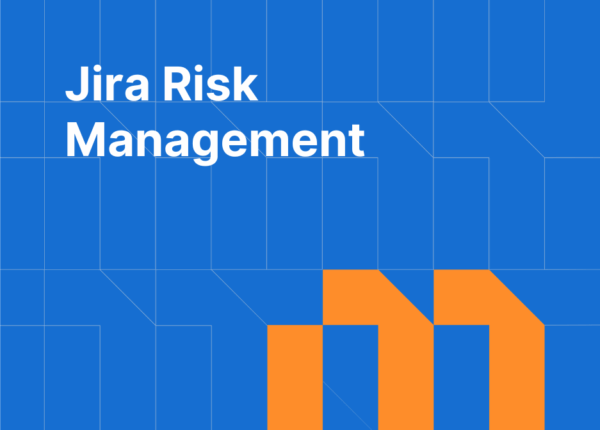Sales teams don’t win by luck. They win by managing complexity. They know what’s in motion, what’s stalled, and what’s worth pursuing.
This is the purpose of a sales pipeline. It transforms unpredictable interactions into a structured, repeatable system. When designed well, it becomes more than a visual tool—it becomes the operational core of revenue performance.
In this article, you’ll learn what a sales pipeline is, what a sales pipeline stage represents, how pipelines differ from funnels, how to build a pipeline for B2B sales, and how CRM systems support pipeline visibility, accuracy, and execution.

Table of Contents
What Is a Sales Pipeline?
A sales pipeline is a visual and operational model that tracks how sales opportunities move through the stages of your sales process. It shows which deals are active, where they stand, and what actions are needed to move them forward.
Each opportunity in the pipeline represents a potential sale. Every stage reflects a real-world milestone, such as a discovery call completed or a proposal reviewed. Together, the pipeline provides:
- A structured view of sales team activity
- A shared language across reps and managers
- A foundation for coaching, forecasting, and performance tracking
Sales pipelines are used daily by individual reps to manage their workload, weekly by managers to run pipeline reviews, and monthly by leadership to forecast revenue and assess sales strategy.
What Is a Sales Pipeline Stage?
A sales pipeline stage is a defined checkpoint in the sales process. It represents a shift in deal maturity and is used to track progress based on buyer actions, not just seller activity.
To be useful, pipeline stages must be:
- Aligned with buyer behavior: Not just internal steps, but real customer engagement
- Based on observable signals: Such as a confirmed meeting, demo attended, or contract sent
- Consistent across the team: So that every rep uses stages in the same way
- Used for decision-making: Managers should coach differently depending on stage
A well-structured pipeline typically includes six to eight stages, starting from qualification and ending at closed won or lost. The clarity and integrity of these stages determine the accuracy of forecasts and the effectiveness of sales execution.
Sales Pipeline vs Sales Funnel
While the terms are often used interchangeably, sales pipeline and sales funnel represent different models.
The sales funnel focuses on lead volume and conversion. It shows how many leads enter the system and how many make it to each phase. It’s useful for marketing teams and revenue operations to analyze lead generation and conversion rates.
The sales pipeline focuses on the progression of individual deals. It tracks which opportunities are active, what stage they are in, and what actions are being taken to close them. Sales teams use it to manage activity, prioritize work, and forecast revenue.
| Sales Funnel | Sales Pipeline |
|---|---|
| Focus on lead volume | Focus on opportunity progression |
| Used for conversion analysis | Used for deal tracking and forecasting |
| Answers “Where do leads drop off?” | Answers “Where is each deal right now?” |
| Owned by marketing | Owned by sales |
Understanding sales funnel vs pipeline helps companies optimize both acquisition and conversion workflows.
What Are the Types of Sales Pipelines?
Not every business uses the same pipeline. Many companies use multiple pipelines to reflect different sales motions, products, or customer segments.
Common Types of Sales Pipelines
- Industry-specific pipelines: Tailored to sectors like real estate, SaaS, or consulting.
- Inbound vs outbound pipelines: Separate processes for marketing-sourced vs rep-sourced leads.
- Multi-pipeline setups: One for new business, another for renewals or upsells.
- Team-based pipelines: Different pipelines for SDRs, AEs, and Account Managers.
While the core principles are the same, adapting your pipeline to your team’s roles and customer journey will improve usability and results.
Why Sales Pipelines Matter in B2B Sales?
In B2B, where sales cycles are long, buyers are complex, and touchpoints are scattered, pipelines are essential.
Without a sales pipeline, it’s nearly impossible to:
- Forecast future revenue with any accuracy
- Spot stalled deals before they become dead
- Align effort with impact across teams
- Identify coaching opportunities for reps
A sales pipeline also supports territory management, quota planning, and cross-functional handoffs between sales, marketing, legal, and delivery. In short, it is the structure that enables execution at scale.
What Does a B2B Sales Pipeline Look Like?
In B2B, pipelines are more detailed than in transactional sales. The buyer’s journey is longer, more complex, and less linear. Pipeline stages must account for multiple stakeholders, legal processes, and often technical evaluations.
Example of a B2B Sales Pipeline
| Stage | Buyer Behavior | Seller Action |
|---|---|---|
| Lead Qualified | Buyer shows interest and fits ICP | SDR books discovery |
| Discovery Complete | Needs and pain points clarified | AE completes deep-dive call |
| Demo Delivered | Solution evaluated | AE presents tailored demo |
| Proposal Shared | Stakeholders align | Proposal sent to buyer |
| Legal/Procurement | Internal approvals begin | Contract review and negotiation |
| Closed Won | Contract signed | Deal moves to onboarding |
| Closed Lost | Deal declined or paused | Reason recorded for review |
This structure supports clean handoffs and consistent reporting, even when timelines stretch across months.
Sales Pipeline Example: SaaS Scenario
Let’s say you sell compliance software to financial institutions.
- Prospecting: Your SDR team identifies IT security leads at mid-size banks
- Qualified: You schedule a discovery call to assess use case and urgency
- Demo Conducted: The AE walks through key features with the head of risk
- Proposal Sent: You provide a custom plan, including SOC 2 audit support
- Procurement Review: The legal team sends back redlines
- Closed Won: Contract is finalized, kickoff scheduled
This is a classic sales pipeline example in B2B SaaS – multiple roles, long timeline, strategic value.
How to Build a Sales Pipeline
A pipeline isn’t a template, it’s a system tailored to your process, your buyers, and your team’s motion.
Steps to Build a Sales Pipeline
- Audit your real sales cycle
Interview reps, analyze win/loss data, map the true buyer journey. - Define stages based on intent shifts
Focus less on internal actions and more on buyer signals. - Set criteria for each stage
Define what has to happen for a deal to move forward (e.g., “Demo attended by technical lead”). - Configure your CRM accordingly
Set up automation, reminders, stage logic, and validation rules. - Train the team and reinforce
Pipeline discipline requires shared understanding, not just system access. - Review and iterate monthly
Measure slippage, time in stage, and velocity. Your pipeline should evolve as your business does.
Knowing how to build a sales pipeline well can mean the difference between random effort and repeatable success.
What Are Sales Pipeline Metrics?
You can’t manage what you can’t measure. That’s why sales pipeline metrics are essential for visibility, coaching, and forecasting.
Key Sales Pipeline Metrics to Track
- Stage-to-stage conversion rate: Where deals fall off
- Average deal size: How much each deal is worth
- Sales velocity: How fast deals close from entry to win
- Pipeline coverage ratio: Pipeline value vs quota
- Win rate: Closed won deals as a % of total
- Time in stage: Where deals are stalling
How CRM Software Supports the Sales Pipeline
Without technology, even the best-designed pipeline fails. A CRM turns structure into action by creating a shared, trackable workspace where deals move, progress is logged, and visibility is always current.
What CRM Software Brings to Pipeline Management
- Pipeline dashboards with live stage data
- Deal-specific timelines and communication history
- Automated activity logging and alerts
- Sales forecasting tools
- Integrated collaboration across teams
Mria CRM: A Pipeline Built for Jira
For teams that already use Jira for delivery, Mria CRM integrates pipeline management directly into that workflow. This means no switching tools, no duplicate data entry, and complete alignment between sales, support, and product.
Mria CRM helps teams manage the entire sales pipeline, from first contact to project kickoff, without leaving Jira.
Final Thoughts
A sales pipeline isn’t just a visual tool. It’s the foundation of your sales system, your forecasting engine, and your management framework.
When it’s aligned with how your customers buy, how your team sells, and how your business delivers, it becomes your most valuable asset.
If your sales process feels inconsistent, unpredictable, or hard to coach, start with the pipeline. Improve how deals are tracked. Improve how stages are defined. Improve how success is measured.
Everything else follows.










